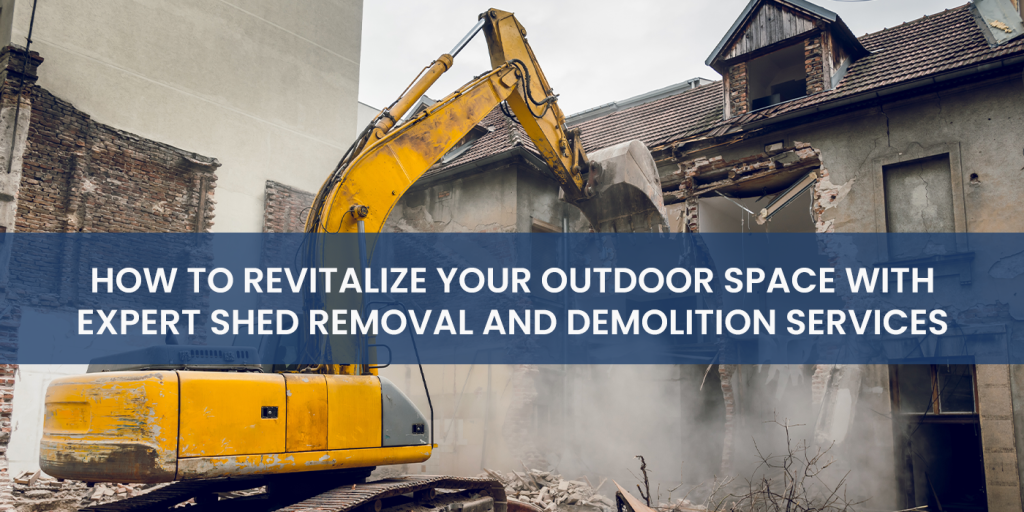Bidding Farewell to Your Shed: When and How to Find Professional Help
Garden sheds can be a fantastic addition to your backyard, offering space for equipment, supplies, and seasonal storage. However, as years goes by, many homeowners find themselves in situations where the shed no longer serves a purpose or has deteriorated. Whether it is an dilapidated shed that has worn down or a design that no longer suits your needs, the choice to take down a shed can be both challenging and empowering. Knowing the right time and the steps to handle this task is essential, especially since the various factors involved in the removal of a shed.
Looking for assistance for shed removal can make the process easier and less hazardous. These experts understand the complexities of taking apart and disposing of structures, ensuring that all aspects is handled without issue while adhering to local regulations. This guide will direct you through the signs that indicate it is time to remove your outbuilding, and outline the process to take when choosing a professional service for the shed removal process, allowing you to regain your yard with ease.
Grasping the Importance for Storage Shed Disposal
Sheds can act different purposes, from keeping items to gardening. Yet, over time, they may become dilapidated or obsolete. When a shed begins to show indications of wear and tear, or if its functionality is no longer needed, it may be the right moment to consider taking it down. Leaving an old shed on your property can detract from its overall aesthetic and even decrease its worth.
There are various reasons homeowners might opt to remove a shed besides mere appearance. In some instances, a deteriorating structure poses risks, such as the risk of caving in or harm from sharp edges. Additionally, bugs may discover shelter in an abandoned shed, leading to further complications that can impact your home environment. Early disposal helps lessen these risks and allows you to retrieve valuable space in your yard.
Another crucial point is land use regulations and local regulations. Many areas have specific rules regarding buildings in residential zones, which may include rules about care, protection, and even the size of your shed. If you have intentions for a new shed or an additional structure, knowing these guidelines is vital. In some instances, consulting professionals who are experts in shed removal can deliver the assistance needed to ensure adherence and a seamless change.
### Considering Professional Assistance for Shed Removal
Deciding to remove a shed can be a significant decision, especially if the structure is large, old, or in poor condition. If you're dealing with a shed that's in disrepair or poses a collapse threat, it is a clear indication that hiring professionals is advisable. Deteriorating sheds can lead to safety concerns, but removing one without proper tools and knowledge may prove difficult.
Moreover, if the shed is located in a tight or difficult area, for example, near fences, trees, or other buildings, engaging specialists can guarantee a secure and effective removal. Experienced specialists have the proper tools and skills to deal with complicated scenarios without damaging your land or adjoining properties. Should you not have the expertise or equipment to face these problems, it is best to enlist the help of a professional removal service.
Lastly, if local regulations and permits affect the removal of your shed, consulting professionals who are familiar with local laws can save you time and potential legal headaches. They will ensure that all aspects of the removal comply with zoning regulations and that any required permits are obtained prior to the demolition. Attending to these legalities is vital for an efficient and uncomplicated removal process.
The Shed Disposal Procedure: Things to Expect
As soon as you decide to contract a qualified shed dismantling team, the procedure usually commences with an initial assessment. This, the removal team will a disposal team will examine your shed and discuss your specific needs. They'll check the size, state, and location of the structure to figure out the best approach for dismantling. Now is also a great time for you to pose questions and address any concerns you might get about the process and the costs entailed.
When the plan is in place, the dismantling team will set a date for the actual demolition of the shed. On the designated day, they will show up with the required gear and protection gear. The team will set up the area by ensuring that there are no hindrances and that protection protocols are in place. They will then proceed to take apart the structure, taking care to adhere to safety protocols and reduce disruption to your land. Depending on the shed's construction, this may involve removing the walls, taking off the roof, and disassembling any built-in features.
Once the structure has been dismantled, the company will generally include cleaning as part of the package. This means they will clear away the leftover materials, leaving your property tidy and prepared for its subsequent use. A few companies may also provide extra services such as leveling the land or getting rid of the shed materials. With everything taken care of, you can anticipate recovering your external area free from the trouble of doing it on your own.
